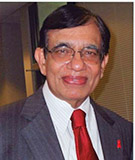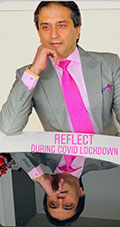
CoronaVirus Pandemic – XV

Now a pandemic of the unvaccinated!
Let me start with a true story. Recently a 51-year-old healthy hospital technician in South Florida catches a little cold, becomes febrile and quickly develops shortness of breath. The ER physician admits him to the ICU with a diagnosis of Covid-19. His condition deteriorates and soon he has to be put on a ventilator because of respiratory failure. Sadly, after a few days, he succumbs! So did a 27-year-old and a 47-year-old man.
What’s unusual about these stories? At this time, when the incidence of Covid-19 infections and death rate has been steadily declining, nobody expects this to happen to healthy young people. The reason? They were all unvaccinated! And the family members of one of them still refused to get vaccinated! Looks like there is a sudden rebound in the number of coronavirus cases across the U.S. from the rapidly spreading new Delta variant, highly transmissible (60 percent more) and quite virulent, turning our cells into big factories for them to replicate fast. The infected have over 1,000 times more virus in them.
More variants, including Lambda, may be on their way. Currently, the U.S. is averaging “more than 23,000 new cases a day; double the seven-day average of 11,300 cases three weeks ago,” according to Johns Hopkins University. The incidence has been rising in almost every state! There were 23,500 cases in children last week alone. Pregnant women are on ventilators. “Where Delta goes, death follows,” says Dr. Catherine O’Neil, an infectious disease specialist. We need to seriously rethink our prevention strategies.
The reason for this uptick, according to CDC, is “Nearly all recent Covid-19 cases and deaths are among unvaccinated, mostly younger people. Americans 65 and older, who are most likely to die from the virus, are generally staying healthy because of high rates of vaccinations. ” The Delta variant is creating havoc among the young unvaccinated people. Arkansas and California lead the nation; Florida has 20 percent of the new cases. Yes, there are a few breakthrough cases in vaccinated people also but the numbers are less, infection is milder and deaths are practically nil in this group. Vaccination is effective against the variant too. Beware, some with compromised immune systems like those with cancer and organ transplants may not be completely protected with even two doses. The immune response is less in the elderly too.
Looks like this is now the pandemic of the unvaccinated!
Sadly, there is still a lot of misinformation, disinformation, rumors and hoaxes about the vaccine among the public. These claims spreading on the social media platforms range from “Vaccines are unsafe and ineffective” to denying Covid-19 exists, offering false cures and decrying vaccines and doctors. That is why still only less than 50 percent of the public are fully vaccinated in spite of easy availability of vaccines in pharmacies and hospitals.
Getting all Americans vaccinated is critical to put the pandemic behind us. Stop vaccine disinformation spread online; it has deadly consequences. All of us, health conscious Americans, should take it upon ourselves to fight this ignorance and misinformation. Yes, we do see occasional side effects like fever, muscle aches, fatigue, swollen lymph nodes, etc., from vaccination, but they are self-limiting. Serious side effects such as myocarditis (inflammation of the heart muscle) and pericarditis (inflammation of the lining outside the heart) are rare. Rarely, some people have developed Guillain-Barre’ Syndrome after getting the Janssen/Johnson & Johnson vaccine. Vaccines are generally safe, but due to the enormous numbers being given, some side effects will pop up. What we need to worry about are the devastating short- term and long-term consequences and possible fatality if one catches a serious infection.
Thankfully, there seems to be some shift in the opinion of vaccine skeptics. But all of us need to emphasize the safety of the vaccine and persuade our friends to get vaccinated. Unlike many other countries where the pandemic is still spreading like wildfire, we have plenty of vaccines available and everybody 12 and older are eligible to get vaccinated. We should raise our voice against the current movement opposing vaccination, a major threat to achieving herd immunity. Another important factor is the irresponsible behavior of the public – not wearing masks, congregating in large numbers indoors, not practicing social distancing and not observing the recommended personal hygiene measures. Some counties like Los Angeles are bringing back mandatory masking. If we want to prevent another lockdown, please get vaccinated today and encourage all your “anti-vaxxer” pals to do so.
To be continued …
M.P. Ravindra Nathan, M.D., is a cardiologist and Emeritus Editor of AAPI Journal. For further reading, “Second Chance - A Sister’s Act of Love” by Dr. Nathan from Outskirts Press, can be found at www.amazon.com
EYE CARE
Can RADIAL KERATOTOMY (RK) surgery complications be fixed? YES!

Radial Keratotomy, as the name suggests, involved surgically making Radial (think spokes of a wheel) cuts in the cornea (front view finder of our eye) to treat nearsightedness (myopia).
Why is this important? First of all, it was a precursor to Lasik eye surgery to help people see without glasses and secondly, thousands of these patients who underwent this surgery in the 1980s are now impacted by poor vision from progressive farsightedness over time, irregular astigmatism with vision fluctuations. This is an aftermath of the surgical complications of this technique or associated situations like cataracts with age.
With the advent of Lasik in 1995, RK was slowly relegated to history simply because Lasik is generally more safer, predictable and accurate since it involved the micron-precision Excimer Laser rather than hand-held blades as in RK.
Though historically first performed in 1936 by a Japanese ophthalmologist, Dr. Tsutomu Sato, it was Russian surgeon, Dr. Svyatoslav Fyodorov in 1974, who popularized this surgical technique after having removed glass splinters from the eye of a boy who had been in a car accident and shattered his glasses. Surprisingly, the boy’s vision improved after this accident from radial cuts that had occurred in his cornea from glass splinters, thus correcting his nearsightedness.
After studying the application, a diamond knife was invented to replicate this technique successfully and many American eye surgeons journeyed to Moscow to learn the surgery and later modified it to a safer procedure, introducing it in the USA in 1978.
Most Lasik or cataract eye surgeons are not trained or experienced to tackle these eyes due to their inherent complexities since patients with previous RK are presenting with a challenging situation in eye surgery. It’s not only because of surgical complexity but also the ability to accurately measure their eyes to determine the lens implant if planning cataract surgery.
Fortunately, with technology today, such patients can once again see and in most cases, even without glasses.
I like to classify Radial Keratotomy impact on eyes into the following categories:
Anatomical:
-
Irregularity of incision
i. Straight
ii. Crooked -
Depth of incision: ranging from deep to perforated.
Refractive:
- Regular Ammetropia (nearsighted, farsighted, astigmatism, presbyopia)
- Irregular Ammetropia (astigmatism).
Visual:
-
Primary visual factors
i. Quantitative: Decreased visual acuity (Myopia, Hyperopia, Astigmatism)
ii. Qualitative: i.e. Irregular astigmatism, small optic zone, incisions -
Secondary visual factors: i.e. Presbyopia, cataracts, corneal scars, corneal instability (thin/ectasia/trampoline effect)
The measured visual disturbance can then be classified as:
-
Irregular astigmatism: Due to the differential impact of each hand-made RK cut in the cornea along with its fluctuating status, can lead to astigmatism that is difficult to measure and treat with its irregular shape and visual impact.
-
Corneal cctasia (Iatrogenic or Surgical keratoconus): Excessively and irregularly deepened RK cuts could not only misshape the cornea, but also allow it to abnormally bulge, leading to visual distortion and compromised structural integrity with a thin and weakened cornea.
-
Corneal scars: Differential healing of the RK cuts along with intersecting patterns can cause scarring in the cornea that impact vision not only by distorting the shape, but also by blocking light and distorting vision.
-
Potentially weak eye: Since these RK incisions were done up to 95 percent depth of the cornea, and at the molecular level these cuts essentially never heal, they are a source of potential weakness in the strength and integrity of the eyeball. Hence, any trauma, injury, or infection can cause devastating damage.
Using new generation, no-cut, no-blade, sub-micron precision lasers, the distorted cornea and its spectacle errors like nearsightedness, farsightedness, astigmatism and even reading glasses can be corrected, reversing years of needless blindness to vision in minutes.
Recently, FDA-approved lens implants that can be used during cataract surgery in Radial Keratotomy eyes can restore vision at most distances and even aspire for vision without glasses.
Additionally, new technology that firms up the cornea (collagen cross linking) and prevents it from further distortion can be used in conjunction with LaZrPlastique or cataract surgery.
So, if you or anyone you know has undergone RK surgery in the past and has vision complaints or developed cataracts with age, they need to make an appointment with their eye doctors and insist on a custom-designed laser or cataract surgery to lead a productive life once again!
Arun C. Gulani, M.D., M.S., is director and chief surgeon of Gulani Vision Institute in Jacksonville. He can be reached at [email protected] or visit www.gulanivision.com